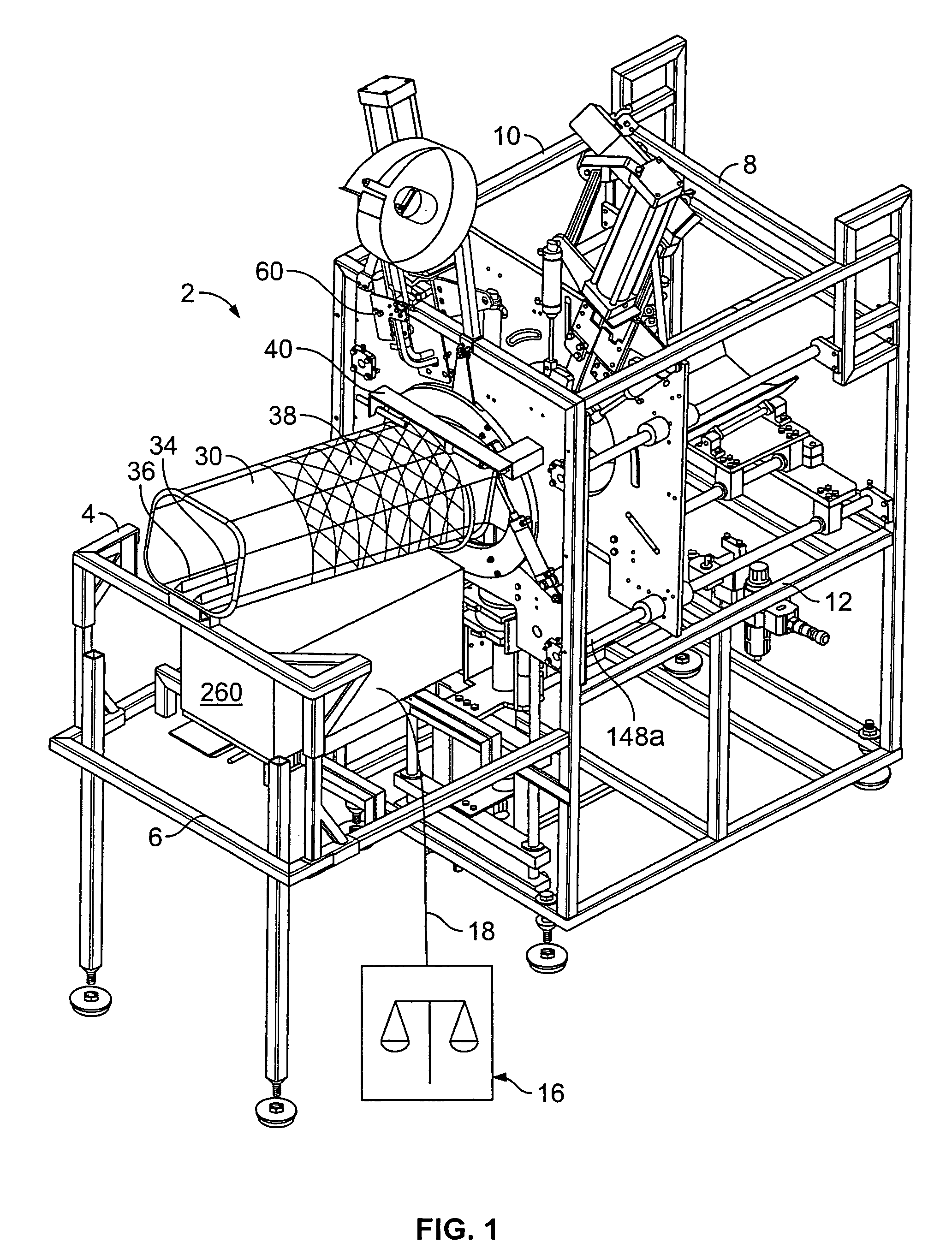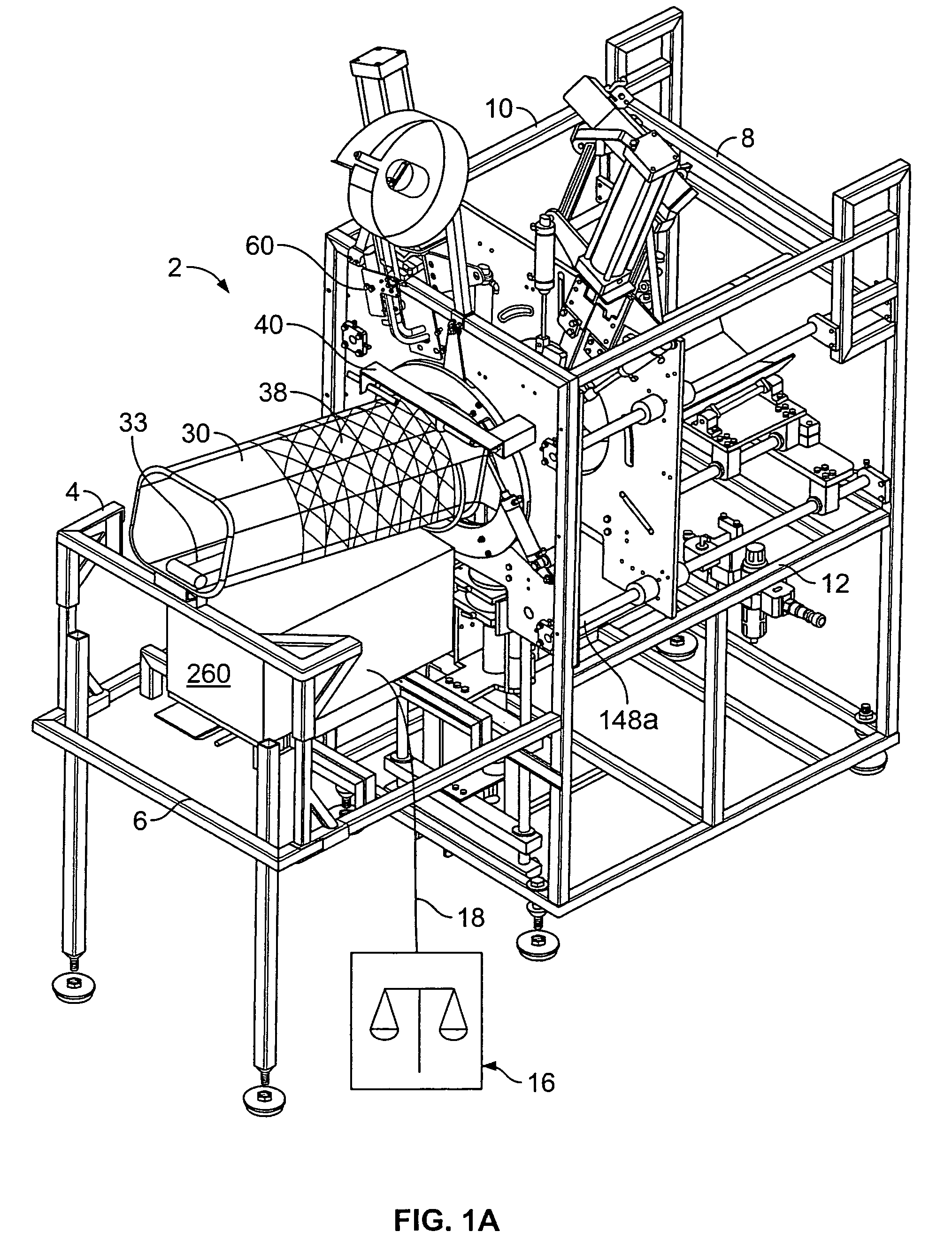Netting knife cutter
a netting knife and cutter technology, applied in packaging foodstuffs, packaging goods, transportation and packaging, etc., can solve the problems of difficult to obtain uniform netting tightness, large manual pulling and wrapping, and laborious prior art methods, and achieve uniform tight appearance
- Summary
- Abstract
- Description
- Claims
- Application Information
AI Technical Summary
Benefits of technology
Problems solved by technology
Method used
Image
Examples
Embodiment Construction
[0033]While the invention may be susceptible to embodiments in different forms, there is shown in the drawings, and herein will be described in detail, a specific embodiment with the understanding that the present disclosure is to be considered an exemplification of the principles of the invention, and is not intended to limit the invention to that as illustrated and described herein. For example, the present disclosure describes the method and apparatus as used to encase whole turkeys. The same method and apparatus can be used for other whole poultry, for poultry parts, such as turkey breast, or for any other material that one may wish to enclose in netting, such as hams, sausages, cheeses, or other food or non-food products, without departure from the invention.
[0034]The apparatus 2, as shown in FIGS. 1, 2, and 3, is built with a frame 4 having a front 6, rear 8, left 10, and right 12. Attached to the frame are a product tube 30, a first iris plate 60, a moving iris plate 132, a t...
PUM
| Property | Measurement | Unit |
|---|---|---|
| diameter | aaaaa | aaaaa |
| weight | aaaaa | aaaaa |
| resistance | aaaaa | aaaaa |
Abstract
Description
Claims
Application Information
 Login to View More
Login to View More - R&D
- Intellectual Property
- Life Sciences
- Materials
- Tech Scout
- Unparalleled Data Quality
- Higher Quality Content
- 60% Fewer Hallucinations
Browse by: Latest US Patents, China's latest patents, Technical Efficacy Thesaurus, Application Domain, Technology Topic, Popular Technical Reports.
© 2025 PatSnap. All rights reserved.Legal|Privacy policy|Modern Slavery Act Transparency Statement|Sitemap|About US| Contact US: help@patsnap.com



